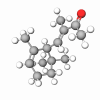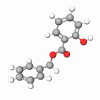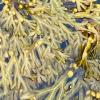Wintergreen (Gaultheria procumbens) is a shrub found predominantly in North America. The Native Americans discovered its use and utilized it for the treatment of muscle and joint pain. They even chewed Wintergreen leaves when they used to run long distances so that they could endure long and arduous journeys, as Wintergreen helped increase their respiratory capacities.
The Wintergreen leaves contain methyl salicylate. This is a chemical that is similar to aspirin. Wintergreen oil is also referred to as Mother Nature’s aspirin. Wintergreen and birch are the only two plants that contain methyl salicylate with its cortisone-like impact.
Wintergreen oil alleviates body, muscle, and joint pain. Gaultheria procumbens relieves headaches and improves digestion. When you rub this oil on affected areas it absorbs through the skin readily, and as it contains methyl salicylate it makes that area numb and has an anesthetic effect on the surrounding nerves.
When you apply it externally, it will penetrate through your skin around your tissues and muscles and stimulate blood circulation in that particular location. It also brings warmth to the affected area, reducing muscle soreness. The oil can provide relief from chest congestion and breathing problems. Antiseptic – Wintergreen oil can be used as a disinfectant.











